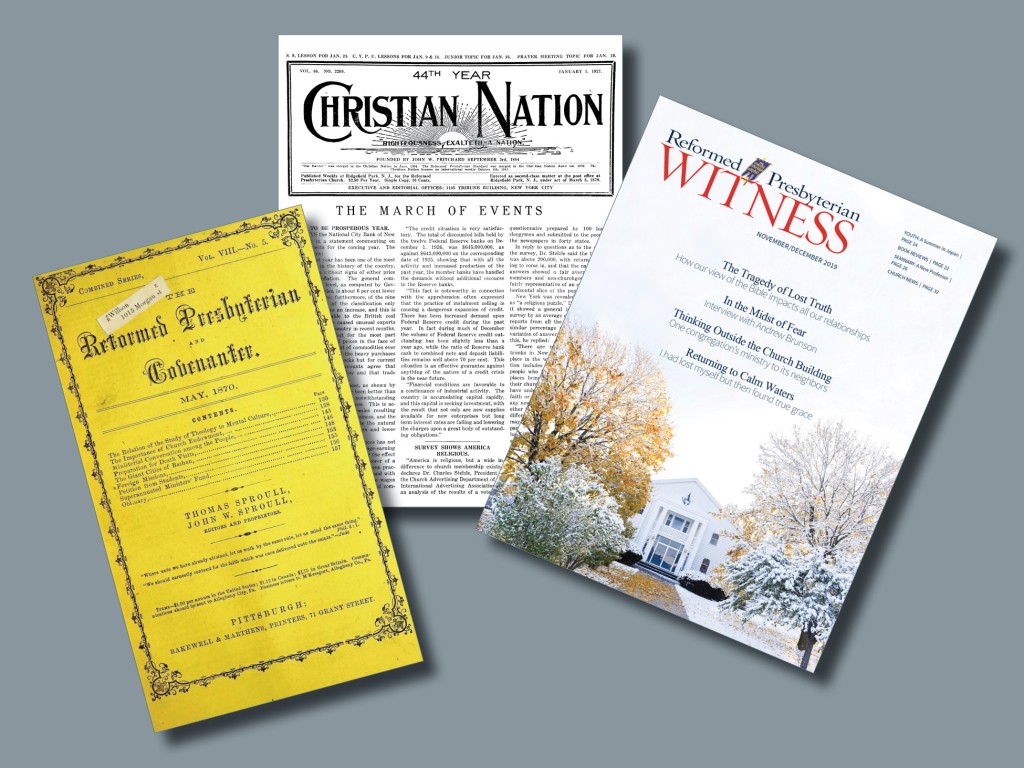You have free articles remaining this month.
Subscribe to the RP Witness for full access to new articles and the complete archives.
We’re familiar with the Reformed Presbyterian Witness today, but what do we know about previous RPCNA magazines? Several short-lived periodicals in the denomination’s early years were succeeded by fewer strong papers, which in their turn declined in the 20th Century as the church weakened.
The first two periodicals functioning as a church paper were the American Christian Expositor and the Albany Quarterly, founded in 1831 by Alexander McLeod and in 1832 by J.R. and S.M. Willson, respectively. McLeod’s death in early 1833 ended the Expositor, and the two Willsons ended their paper in the same year as the RPCNA split into two denominations.
Four years later, Moses Roney of Coldenham, N.Y., founded the Reformed Presbyterian, which survived his 1854 death. As elders debated the existence of the diaconate, prominent pro-deacon minister James M. Willson of Philadelphia, Pa., founded the Covenanter in 1845. The two magazines functioned together until 1863, when they were consolidated into the Reformed Presbyterian and Covenanter, or RP&C. It operated for a generation, fading out in 1895 amid calls for consolidation, as there were then two additional church magazines.
In 1874 J.H. Boggs founded Our Banner (sometimes competing with the RP&C), while John W. Pritchard’s Christian Nation, founded in 1884, ultimately became strong enough to buy Our Banner in 1898. One year later, J.S. Martin and G.A. Edgar started the Reformed Presbyterian Standard, but it merged with the Christian Nation in 1908.
Although the weekly issues of the Christian Nation were the RPCNA’s only periodical for 20 years, our strong foreign missions drew plenty of attention. For this reason, a new magazine dedicated to missions, Olive Trees, was started in 1898. Its pages sometimes featured domestic news from locations such as the Indian Mission in Oklahoma and the mission among Chinese immigrants in Oakland, Calif., but it concentrated on the church’s strong missions in China and the eastern Mediterranean. As membership and readership declined in the 1920s, Synod began to consider further consolidation of church periodicals.
Eventually, the Synod of 1928 established a new weekly church paper, elected a new editor, and asked the Foreign Mission Board to end Olive Trees so that the church’s entire attention could be given to the new paper. The Christian Nation was privately owned, so Synod couldn’t abolish it; but the owner discontinued it by year’s end, and the Foreign Mission Board complied with Synod’s request. The Witness was born.
You can find many of the publications mentioned above at RPArchives.org.
